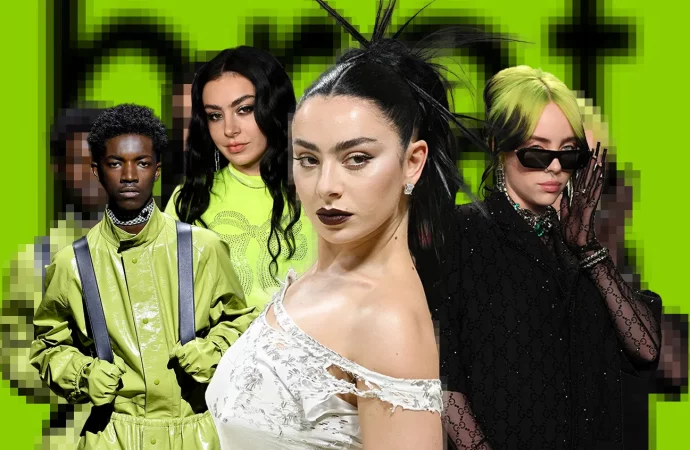Introduction Pop culture greatly influences many parts of society, and one of the most obvious areas affected is fashion. The music we like, the movies we watch, and the celebrities we look up to have all influenced fashion trends over the years in terms of apparel, accessories, and designs. This article looks at how pop
Introduction
Pop culture greatly influences many parts of society, and one of the most obvious areas affected is fashion. The music we like, the movies we watch, and the celebrities we look up to have all influenced fashion trends over the years in terms of apparel, accessories, and designs. This article looks at how pop culture, fashion, and aesthetics are connected and how they influence each other.
Historical Overview of Pop Culture and Fashion
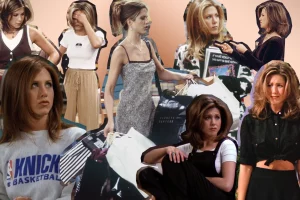
Image by: Yandex.com
The relationship between pop culture and fashion is not a new phenomenon. Since the early 20th century, fashion has often mirrored the prevailing cultural movements. For instance, the flapper style of the 1920s emerged alongside the Jazz Age, reflecting a shift toward modernity and freedom. Similarly, the rock ‘n’ roll era of the 1950s introduced rebellious styles, such as leather jackets and denim, influenced by music icons like Elvis Presley and Marlon Brando.
The Rise of Celebrity Influence
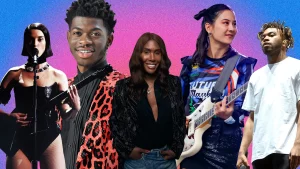
Image by: Yandex.com
In today’s society, celebrities play a crucial role in shaping fashion trends. From movie stars to musicians, public figures have the power to influence public perception and consumption. The “celebrity endorsement” phenomenon began gaining traction in the 1980s and continues to thrive, with social media platforms further amplifying their reach. When celebrities wear certain brands or styles, their followers are often quick to imitate them, leading to rapid shifts in fashion trends.
The Role of Celebrities in Fashion
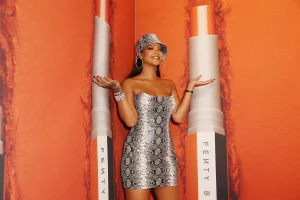
Image by: Yandex.com
Celebrities play a pivotal role in shaping fashion trends. Their choices often become the blueprint for what is deemed stylish. For example, when a star wears a particular designer, that brand can experience a surge in popularity. The phenomenon of “celebrity endorsement” has become a vital aspect of marketing in the fashion industry.
Notable Examples of Celebrity Influence
- Rihanna: Known for her bold style choices, Rihanna has launched her fashion line, Fenty, which blends high fashion with streetwear.
- Kardashians: The Kardashian-Jenner family has leveraged their reality TV fame to create a massive influence on fashion, launching various clothing lines and setting trends through their social media platforms.
- Harry Styles: Often praised for his gender-fluid fashion sense, Styles challenges traditional gender norms in clothing and inspires a new wave of male fashion.
The Connection Between Pop Culture and Fashion
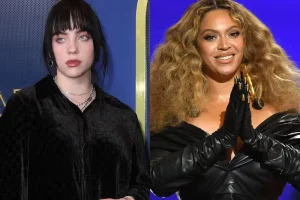
Image by: Yandex.com
Fashion has always been a reflection of society’s values, beliefs, and trends. Pop culture serves as a lens through which we can see these changes unfold. The music we listen to, the films we watch, and the celebrities we admire all contribute to the evolving landscape of fashion. For instance, the rock and roll era of the 1950s and 1960s brought about a significant shift in fashion, emphasizing individuality and rebellion.
Key Influences of Pop Culture on Fashion
- Music: Iconic musicians like Elvis Presley, Madonna, and more recently, Beyoncé and Billie Eilish, have shaped fashion trends with their unique styles.
- Film and Television: Movies and TV shows often dictate what is trendy. Shows like Friends popularized casual wear in the 90s, while films like Clueless influenced teen fashion.
- Social Media: Platforms like Instagram and TikTok have revolutionized how trends spread. Influencers can launch new styles overnight, making fashion more accessible than ever.
Contemporary Trends: The Current Landscape of Pop Culture and Fashion
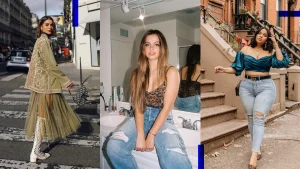
Image by: Yandex.com
1. The Role of Influencers
Today, social media influencers play a crucial role in shaping fashion trends. Platforms like Instagram and TikTok allow individuals to share their unique styles, leading to the rise of micro-trends that can quickly gain traction. The influence of digital creators blurs the lines between traditional celebrity endorsements and grassroots fashion movements, empowering individuals to express their aesthetics.
2. Sustainability and Ethical Fashion
As awareness of environmental issues grows, many consumers are turning to sustainable and ethical fashion choices. Pop culture figures advocate for eco-friendly practices, encouraging their followers to consider the environmental impact of their clothing. This shift has led to an increase in thrifting, upcycling, and support for brands prioritizing sustainability.
Challenges Of Pop Culture On Fashion & Aesthetics
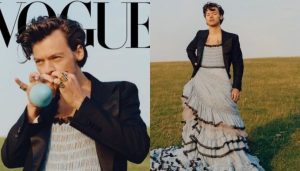
Image by: Yandex.com
While pop culture has a significant impact on fashion, there are also challenges.
- Fast Fashion: The quick turnarounds of trends often lead to “fast fashion,” where clothes are made cheaply and quickly, resulting in waste and poor quality. This can harm the environment and exploit workers.
- Body Image Issues: Pop culture often promotes narrow beauty standards, which can lead to body image issues for many people. When celebrities and influencers portray certain body types as ideal, it can pressure individuals to conform.
- Cultural Appropriation: Fashion can sometimes borrow elements from different cultures without understanding their significance. This can lead to cultural appropriation, where elements of a culture are used without respect or acknowledgment.
- Over-saturation of Trends: With social media, trends spread quickly, leading to an oversaturation of styles. This can make it hard for individuals to find their unique identity in fashion.
Future Of Pop Culture On Fashion & Aesthetics
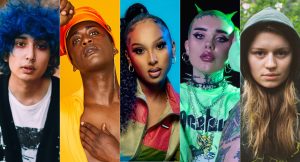
Image by: Yandex.com
Anticipating the future, pop culture-influenced fashion is expected to concentrate on multiple important domains:
- Sustainability: As awareness of environmental issues grows, more brands will focus on sustainable practices. This includes using eco-friendly materials and promoting ethical production methods.
- Inclusivity: The fashion industry is beginning to embrace diversity in body types, ethnicities, and genders. Future trends will likely continue this push for inclusivity, allowing more people to see themselves represented in fashion.
- Technology Integration: The use of technology in fashion is on the rise. Virtual try-ons, augmented reality, and AI will change how we shop and experience fashion, making it more personalized and accessible.
- Cultural sensitivity: There will likely be a greater emphasis on understanding and respecting cultural influences. This can lead to more thoughtful collaborations that celebrate rather than appropriate different cultures.
Analysis of Pop Culture’s Influence on Fashion
To better understand the impact of pop culture on fashion, we can examine several key factors:
| Factors | Description | Impact on Fashion |
|---|---|---|
| Media Representation | Movies, TV shows, and music videos showcase specific styles and trends. | Popularizes certain looks, making them mainstream. |
| Social Media | Platforms like Instagram, TikTok, and Pinterest amplify trends and styles. | Enables rapid trend dissemination and influence. |
| Celebrity Endorsement | Celebrities often collaborate with brands or wear their items in public. | Drives consumer interest and sales. |
| Cultural Movements | Societal changes influence fashion, such as the shift toward sustainability. | Promotes eco-friendly and ethical fashion choices. |
Comparative Table: Pop Culture Trends Over the Decades
| Decade | Key Pop Culture Trends | Fashion Highlights | Cultural Impact |
|---|---|---|---|
| 1950s | Rock ‘n’ Roll, Hollywood Glamour | Leather jackets, poodle skirts, and pearls | Emphasis on youth culture and rebellion |
| 1960s | Counterculture, Hippie Movement | Tie-dye, bell-bottoms, and mod styles | Challenges to traditional values and norms |
| 1970s | Disco, Punk Rock | Platform shoes, vibrant colors, and punk aesthetics | Rise of individuality and self-expression |
| 1980s | MTV, Hip-Hop | Oversized clothing, neon colors, and athletic wear | Glamorization of consumer culture |
| 1990s | Grunge, Rave Culture | Flannel shirts, baggy jeans, and crop tops | Rejection of mainstream fashion |
| 2000s | Reality TV, Emo Culture | Low-rise jeans, graphic tees, and accessories | Emphasis on personal branding and identity |
| 2010s | Social Media, Influencer Culture | Streetwear, athleisure, and minimalist styles | Blurring lines between fashion and daily wear |
Conclusion
The interplay between pop culture and fashion is a dynamic and evolving relationship that reflects broader societal changes. As music, film, and celebrities continue to shape our cultural landscape, the fashion industry adapts and transforms in response. Understanding this impact allows us to appreciate the significance of fashion as more than just clothing; it is a powerful form of self-expression and a mirror of our times.

